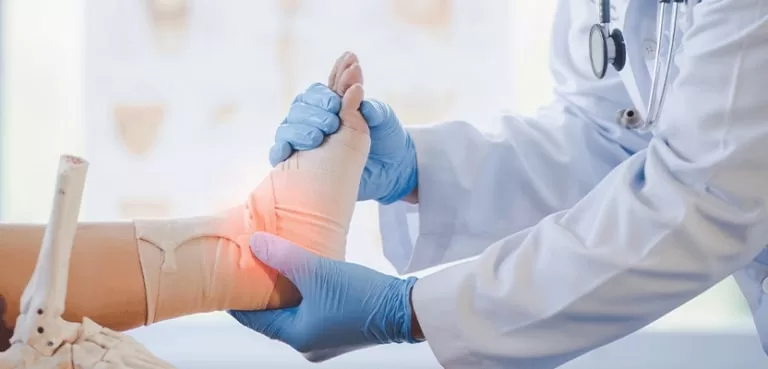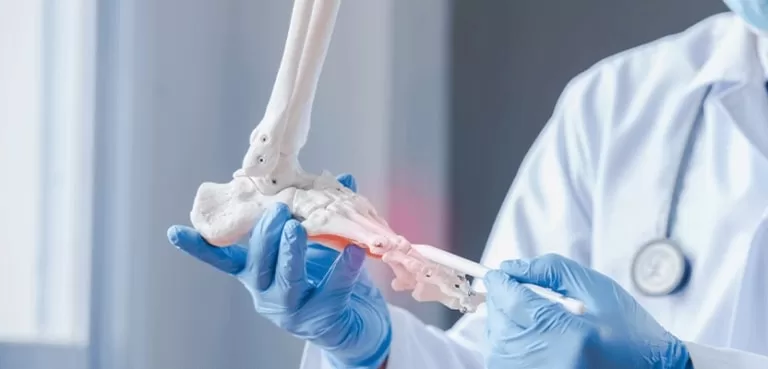+90 533 813 89 77
info@bookingforhealth.com
What is Orthopaedic Surgery and Which Diseases Does It Cover?
Orthopaedic surgery is a branch of medicine that focuses on the diagnosis, treatment, and prevention of injuries and disorders of the musculoskeletal system, which includes bones, joints, muscles, tendons, ligaments, and nerves. Orthopaedic surgeons use both surgical and non-surgical techniques to treat a wide range of conditions that affect the musculoskeletal system. Orthopaedic surgery covers a wide range of conditions and injuries.
- Arthritis: A degenerative condition that affects the joints, causing pain, stiffness, and loss of mobility.
- Osteoporosis: A condition that causes the bones to become weak and brittle, increasing the risk of fractures.
- Back and Neck Pain: Pain in the back or neck can be caused by a variety of conditions, including herniated discs, spinal stenosis, and degenerative disc disease.
- Fractures: Broken bones that can occur due to trauma or overuse.
- Sprains and Strains: Injuries to ligaments and muscles that can occur due to trauma or overuse.
- Tendinitis: Inflammation of the tendons, which can cause pain and weakness.
- Bursitis: Inflammation of the bursa, which is a fluid-filled sac that cushions the joints.
- Carpal Tunnel Syndrome: A condition caused by compression of the median nerve in the wrist.
- Scoliosis: A condition where the spine has an abnormal curvature.
- Degenerative Disc Disease: Wear and tear on the discs in the spine that can cause pain, stiffness, and loss of mobility.

Is Prevention and Management of Orthopaedic Disorders Possible?
Prevention and management of orthopaedic disorders are possible. Orthopaedic disorders can be prevented through lifestyle changes and appropriate treatments.
- Maintaining a Healthy Lifestyle: This requires regular physical activity, maintaining a healthy weight and avoiding smoking.
- Proper Posture and Body Mechanics: This includes using proper posture and body mechanics when sitting, standing, and performing activities to reduce stress on the joints and muscles.
- Proper Exercise: Regular physical activity such as low-impact exercises such as swimming, cycling and walking can prevent orthopaedic disorders.
- Proper Nutrition: This includes eating a diet rich in calcium, vitamin D, and other nutrients that are essential for bone health.
- Avoiding Overuse: This requires avoiding repetitive movements and high-impact activities that can put stress on joints and muscles.
- Physical Therapy: Physical therapy can help to alleviate pain, improve the range of motion, and strengthen the muscles that support the joints.
- Medications: Medications such as non-steroidal anti-inflammatory drugs (NSAIDs) and muscle relaxants may be prescribed to reduce pain and inflammation.
- Bracing: It can be used to support and stabilize the affected joint and reduce pain.
- Surgery: It may be considered in severe cases or if conservative treatment options have been ineffective.
It’s important to work with a healthcare provider to develop an individualized plan for the prevention and management of orthopaedic disorders. It’s also important to note that not all orthopaedic conditions can be prevented, but early diagnosis and treatment can help to reduce the risk of complications and improve the chances of a full recovery.

What are Surgical and Non-Surgical Treatments for Orthopaedic Disorders?
Orthopaedic conditions can be treated with both surgical and non-surgical methods.
Surgical treatments include replacing a damaged joint with a prosthetic joint, replacing and stabilising a broken bone, using a small camera to view and repair damage within the joint, and repairing spinal damage such as a herniated disc.
Non-surgical treatments include exercises to improve strength, flexibility and range of motion, painkillers and anti-inflammatory medications, support and protection of a damaged joint or bone, corticosteroids to reduce inflammation or lubricants to reduce friction in a joint, weight loss, smoking cessation and other changes to reduce stress on joints.
How are Recovery and Rehabilitation After Orthopaedic Surgery?
Recovery and rehabilitation after orthopaedic surgery varies depending on the type of surgery and the individual’s overall health. In general, the recovery process involves a combination of rest, physical therapy, and rehabilitation exercises.
Immediately after surgery, the focus is on controlling pain, managing swelling, and preventing blood clots. The patient may be prescribed pain medication and physical therapy will be started to help the patient move the joint and to prevent stiffness.
The length of recovery and rehabilitation period depends on the type of surgery, the patient’s overall health, and the patient’s commitment to the rehabilitation process. Some patients may be able to return to their normal activities within a few weeks, while others may take several months to fully recover.
It’s important to follow the surgeon’s instructions and physical therapist’s plan to ensure the best possible outcome, and to avoid complications or re-injury.